Search for answers or browse our Knowledge Base.
Guides | Models | Validation | Book
New Tools in AN-SOF: Selecting and Editing Wires in Bulk
Discover the new wire selection and editing tools in AN-SOF! From bulk selection with the Selection Box to precise control via the Tabular Input window, these features streamline antenna modeling. Modify multiple wires effortlessly and enhance your workflow. Explore these powerful tools today!
In antenna modeling, efficiency and precision in wire selection and editing are crucial for a smooth workflow. Since version 10.5 of AN-SOF Antenna Simulator, several new tools have been introduced to simplify bulk wire selection and modification. These tools allow users to streamline their workflow, whether by selecting multiple wires simultaneously, picking them individually, or using a powerful spreadsheet-style interface known as the Tabular Input window. Let’s explore these new features and how they can enhance your experience with AN-SOF.
Selecting Wires in AN-SOF
AN-SOF now provides multiple ways to select wires for editing:
1. Selection Box Tool
This method allows users to select multiple wires by dragging a rectangular selection box over them (see Fig. 1). The behavior depends on the direction of the drag:
- Top to Bottom: Selects only fully enclosed wires.
- Bottom to Top: Selects both fully and partially enclosed wires.
To use this tool, click the Selection Box button in the main toolbar, then drag the box over the desired wires. To deselect all, simply double-click on the workspace or press ESC.
If wires that are already selected are enclosed with the Selection Box, they will be deselected.
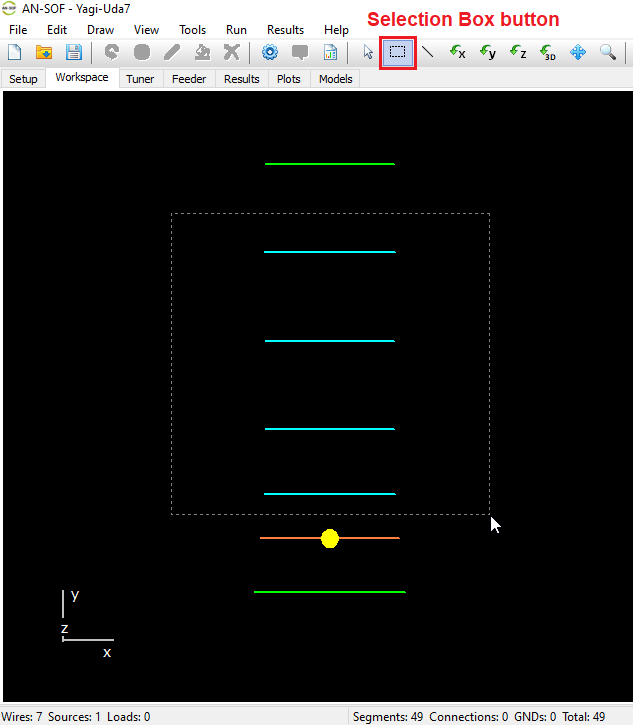
2. Wire-by-Wire Selection
For more precise control, users can manually select wires one by one:
- Click the Select Wire button (arrow icon) in the toolbar.
- Hold the Ctrl key and left-click on individual wires to add them to the selection.
- Click a selected wire again while holding Ctrl to deselect it.
- To clear all selections, double-click on the screen or press ESC.
3. Combining Selection Methods
A hybrid approach allows users to start with the Selection Box tool and then refine the selection by manually adding or removing wires using Ctrl + left-click. This flexibility is especially useful when working with complex models that contain dense wire structures. The video below illustrates this procedure in detail.
A Fluid Workflow Experience
The video below and the accompanying flowchart demonstrate the enhanced multiple-wire selection and editing workflow in AN-SOF, making iterative modeling and simulation faster and more intuitive:
Step-by-Step Iterative Workflow
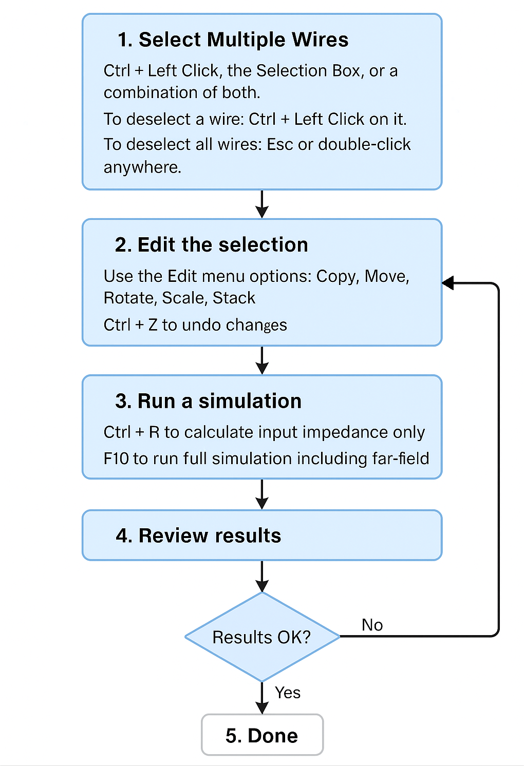
1️⃣ Select Multiple Wires
- Use Ctrl + Left Click, the Selection Box, or both.
- Selected wires are highlighted in light blue.
- To deselect a wire: Ctrl + Left Click on it.
- To deselect all wires: Press ESC or double-click anywhere on the workspace.
2️⃣ Edit the Selection
- Use the Edit menu options: Move, Rotate, Scale.
3️⃣ Run a Simulation
- Press Ctrl + R to calculate input impedance only.
- Press F10 to run the full simulation including far-field results.
4️⃣ Review Results
5️⃣ Continue Editing
- Selected wires remain highlighted after simulation.
- Resume scaling, moving, rotating, etc., without reselecting.
- Use Ctrl + Z / Ctrl + Y to undo/redo changes.
🔁 Iterate as Needed
- Edit, simulate, and fine-tune your model continuously until you achieve the desired result.
🆕 Improved View Adjustments
Editing Wires in Bulk
Once multiple wires are selected, users can modify them simultaneously via Edit > Modify in the main menu (see Fig. 2). The Modify Wires dialog box provides several tabs for making changes:
- Attributes Tab: Adjust the segmentation of selected wires either by setting a fixed number of segments or defining segments per wavelength.
- Materials Tab: Change material properties of all selected wires at once.
- Sources/Loads Tab: Bulk delete applied sources and loads.
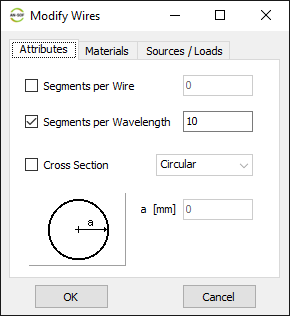
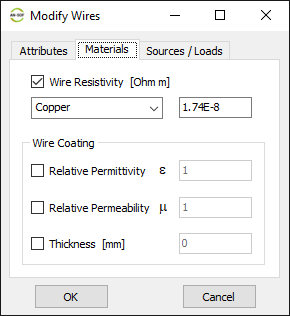
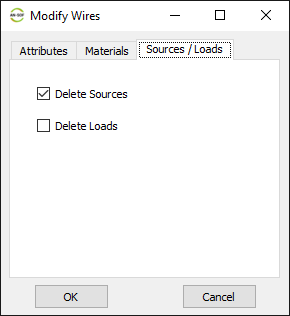
Editing Wires with the Tabular Input Window
For users who prefer a structured table-based approach, the Tabular Input window offers an intuitive interface to enter and modify wire properties.
Accessing the Tabular Input Window
Navigate to Draw > Tabular Input (Ctrl + T) to open this feature (see Fig. 3). The window consists of four main tabs:
- Wires Tab: Define or edit wire end coordinates, segmentation, radius, and materials.
- Sources Tab: Assign voltage or current sources to specific wire segments.
- Loads Tab: Apply loads (inductors, capacitors, or impedances) to specific wire segments.
- Trans. Lines Tab: Connect transmission lines between wire segments.
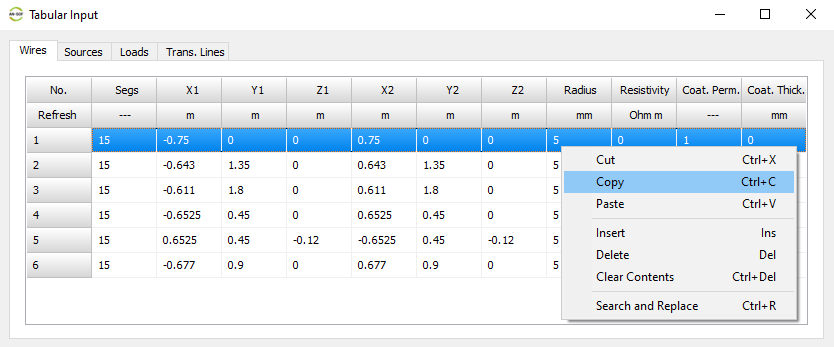
Advanced Editing Features
- Search and Replace: Quickly update wire coordinates in bulk.
- Copy/Paste: Easily duplicate and adjust wire properties.
- Row Selection & Highlighting: Selected rows correspond to wire numbers displayed in the workspace for easy identification.
- Instant Updates: The Refresh button ensures changes take effect immediately without closing the window.
Why These Tools Matter
The introduction of bulk selection, modification tools, and the Tabular Input window dramatically improves efficiency when working with complex antenna structures. Whether modeling large antenna arrays or fine-tuning intricate geometries, these tools reduce manual effort, enhance precision, and provide greater flexibility.
By leveraging these new features in AN-SOF, users can significantly streamline their workflow, making antenna simulation more intuitive and productive than ever. If you haven’t explored these tools yet, now is the perfect time to start!
For more detailed guides, visit the following articles:

